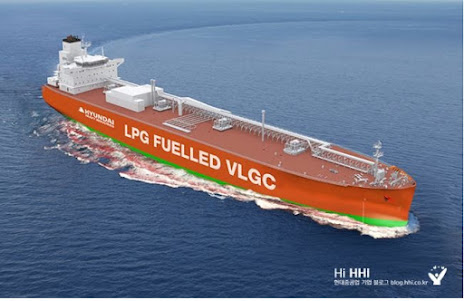Norwegian shipping company BW LPG wanted to use its LPG
cargo as a fuel for a pre-2016 code vessel, since it offers
environmental advantages over oil – but it needed a different
regulatory regime to do so.
This was developed by the Isle of Man Ship Registry (IOMSR) Norwegian shipping company BW LPG wanted a regulatory methodology to permit a pre-2016 code VLGC (very large gas carrier) to be retrofitted to use liquefied petroleum gas (LPG), normally butane and propane as fuel for propulsion.
For the last four years, it has been possible for vessels to be designed and built to the International Gas Carrier code (2016 IGC code) and permitted to run on LPG fuel.
But for vessels built under the previous code (1983 IGC code as amended) this was not a permitted option.
So, BW LPG had discussions with its flag, The Isle of Man Ship Registry (IOMSR), about how this could be changed. Discussions began with IOMSR and BW LPG, as well as partners Wartsila Gas Solutions, MAN Energy Solutions and DNV-GL in 2018. Aside from the fact that LPG is already being carried (as the cargo), it offers benefits over LNG (which was allowed as a fuel under the 1983 code).
LPG does not need to be cooled to cryogenic temperatures,
so the storage tanks can be made from less expensive materials. There is a much
wider availability of fuel gas, which can be supplied by road tankers at most
ports, whereas LNG isn’t.
LPG offers advantages over fuel oil. “Gas is cleaner to burn than fuel oils and allows a large reduction in particulate emissions, helping to meet ever-tightening restrictions placed upon the marine industry,” he says. After much discussion and research by interested parties, IOMSR put together relevant paperwork and submitted a design equivalence application to the International Maritime Organization.
This equivalence, granted in March 2020, allows the use of LPG as a fuel on the VLGC BW Gemini, setting a precedent in the industry and enabling the IOMSR to issue the world’s first flag acceptance of a modification to use LPG as fuel for older gas tankers.
“A full conversion of the ship, which has been in
service for about ten years, was not an option because it would have run into
millions of pounds and taken much longer to carry out,” says Mr Liddell.
“Instead, it was decided to carry out a modification
of the engine and fuel supply system, which was much more commercially viable.”
The retrofitting work took place in Q4 of 2020 and lasted just over two months. It involved fitting the vessel with two extra LPG fuel storage tanks in the cargo area, a high-pressure liquid fuel system for the modified MAN Energy Solutions two stroke engines and significant upgrades to the fuel delivery and associated safety and control systems.
The work was timed to be carried out during the
BW Gemini’s dry dock period, to ensure the vessel was not out of service any
longer than necessary. In November, BW LPG announced the successful completion
of sea and gas trials.
Pontus Berg, Executive Vice President (Technical and Operations), BW LPG, said: “BW LPG has chosen to commit 12 of our VLGCs to be retrofitted with pioneering LPG propulsion technology. This is a significant upfront investment of over USD100 million, and it represents our willingness to act on the ESG front.”
“Building new ships can provide the benefits of operating with LPG but comes at a heavy cost.” “Counting total emissions, a new ship represents about 70,000 tons of carbon dioxide in the materials and building process, compared to 2,000 tons of carbon dioxide for retrofitting.
“The sustainability outcome is much better from
retrofitting than from building new vessels.”
“We thank the Isle of Man Ship Registry for its strong
support and for embarking on this journey with BW LPG to take the lead and
advance technology closer towards a zero-carbon future.”
The vessel is thought to have achieved a historic
milestone as the world’s first VLGC to be fueled by LPG. It has sailed on LPG
propulsion across the Pacific Ocean to Texas for loading, another historic
first.
This voyage is expected to produce twenty percent less greenhouse gas emissions and use ten percent less fuel overall, compared to regular fuel oil, according to BW LPG. The work of IOMSR in gaining the design equivalence for their clients to enable the plans to go ahead, has paved the way for five other ships of the same class to undergo the same modification. Ships in other classes will be subject to the same discussions and application for design equivalence should their owners wish to modify them to run on LPG. IOMSR is able to assist with its expertise, Mr Liddell says.

Δεν υπάρχουν σχόλια:
Δημοσίευση σχολίου